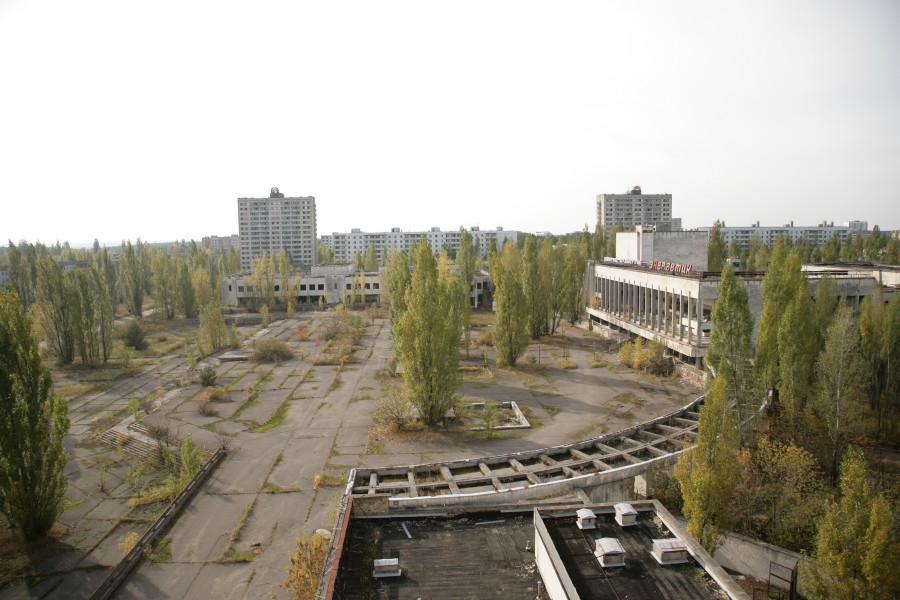News
Thirty-Five Years On, Conspiracy Theories Surrounding Chernobyl Disaster Persist
The explosion of a nuclear reactor at the Chernobyl Nuclear Power Plant in Ukraine, then part of the Soviet Union, was an unprecedented ecological and humanitarian disaster. Though some aspects of the event are still disputed, it is generally accepted that the explosion was an accident caused by design issues and human error. Still, writes Anastasiya Astapova, Associate Professor of Folkloristics at the Institute of Cultural Research of the University of Tartu, various conspiracy theories challenging this explanation have since emerged, and are often adapted to suit particular political and ideological agendas.
The disaster, which occurred on April 26, 1986, caused over 30 deaths in the immediate aftermath and displaced many Soviet citizens through ensuing evacuations. Radiation was spread across vast distances, and the Soviet Government is often accused of secrecy and incompetence in managing the crisis. The evidence indicates that the reactor accidentally exploded during a failed safety test, though disagreement around other factors, such as the number of evacuees and disaster workers (the so-called ‘liquidators’), continues. In the context of such uncertainty, conspiracy theories offering far-fetched alternative explanations abound.
In a study published in 2020, Astapova examines the dominant conspiracy theories surrounding the catastrophe. Some of these emerged immediately after the explosion, owing to the Soviet Government’s failure to issue warnings and safety guidelines.
Rumours, Astapova writes, were perceived as “a better source of information than the Soviet mass media.” A whole range of “folk remedies” to radiation poisoning were adopted, including cucumbers, fresh milk, and vodka, the latter of which was actually supplied to firefighters and liquidators for this reason. In some cases, ‘psychics’ or ‘healers’ were hired by residents to lower background gamma radiation, while others alleged UFO and extraterrestrial involvement of some kind in the disaster.
Cold War Conspiracies Disputed the Official Story
Primitive rumours were succeeded by more complex counterfactual narratives that were deeply rooted in Cold War sentiments. The most prominent of these theories centres on accusations of “Western sabotage”, portraying “the United States as a villain responsible… for the actual explosion.” Theories around CIA infiltration of Chernobyl and capitalist malice thrived after the accident, especially in the economic and political instability following the sudden collapse of the Soviet Union in 1991.
Other theories implicate the Soviet state to varying degrees, with the more extreme of them accusing state apparatus like the KGB of “planing Chernobyl as an experiment to observe the effects of radiation”, using Soviet citizens to gather data about radiation sickness in preparation for war with the West.
Theories attributing blame to the Soviet state, Astapova suggests, are enhanced by the harm caused by the Government’s “secrecy and mismanagement of the tragedy”. Contributing factors include the delayed evacuations of civilians from dangerously radioactive areas, and inadequate briefing and protective measures for firefighters and liquidators.
Conspiracy Theories Linger Today
Astapova stresses that Chernobyl conspiracy theories endure decades after the accident. In Ukraine, accusations that Moscow contrived the explosion re-emerged throughout Euromaidan and the 2014 annexation of Crimea by Russia.
There is also, Astapova asserts, “a Russian patriotic counter-campaign claiming that the Chernobyl accident is nothing more than a great hoax”. Proponents of this view portray the disaster as a minor incident blown terrifically out of proportion, arguing that mass hysteria did more harm than radiation sickness. Western scientists, politicians and green lobby groups are accused of profiting from the deceit by stoking anti-nuclear passions and laundering money disguised as ‘foreign aid’.
Russian “patriotic” interpretations of Chernobyl resurfaced with the popular success of the 2019 HBO miniseries Chernobyl, which criticised Soviet governmental conduct during the crisis. The Russian network NTV even announced its intention to air its own Chernobyl series implicating the CIA, rejuvenating the theories about American involvement in the disaster. This version of events also enjoys support among members of the Russian Federation’s Communist Party.
Clearly, Astapova contends, Chernobyl conspiracy theories “remain tools for current political and ideological struggles and are no less topical today than they were directly after the accident”.
Associate Professor Anastasiya Astapova is a folklorist at the University of Tartu, Estonia. Her research interests include humour, life under authoritarian regimes, ideology, and rumour and conspiracy theories. Her study ‘Chernobyl conspiracy theories: From American sabotage to the biggest hoax of the century’ first appeared in the collection ‘Conspiracy Theories in Eastern Europe: Trends and Tropes’.
